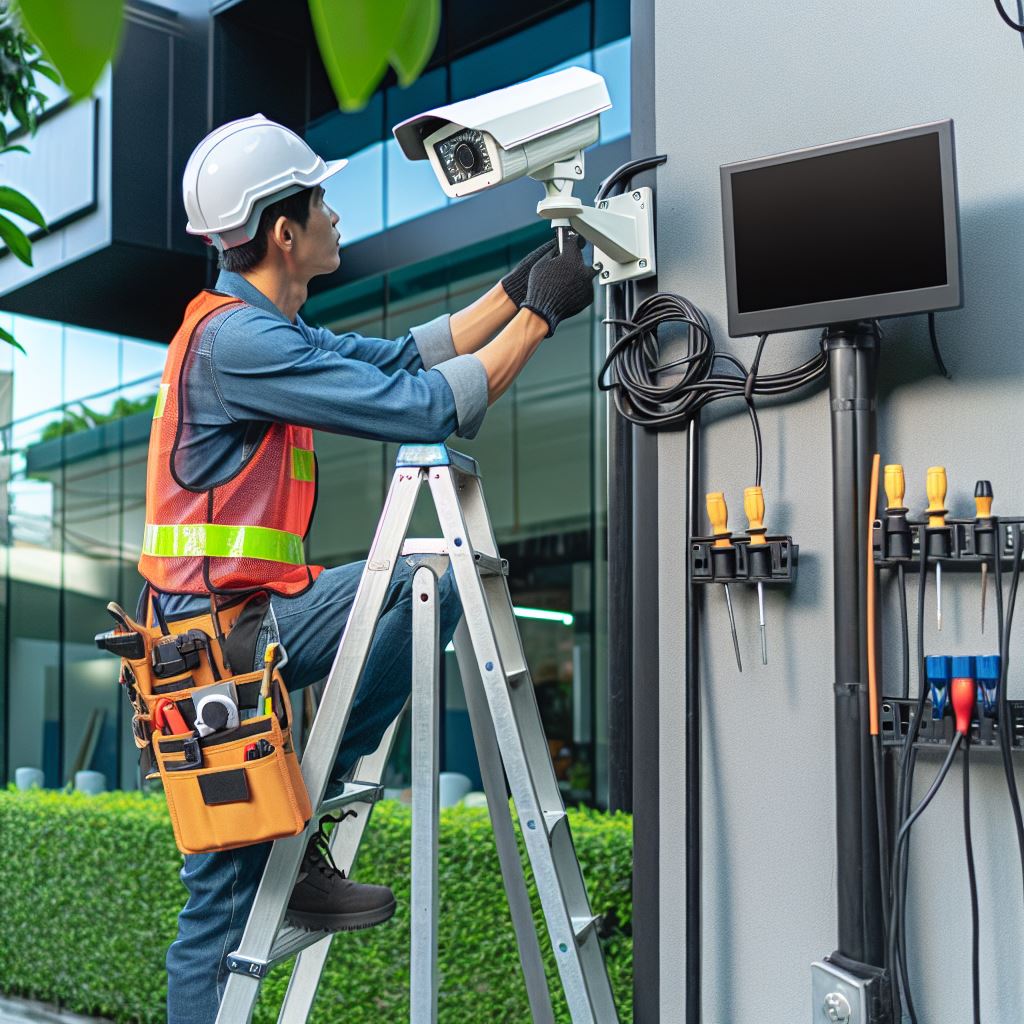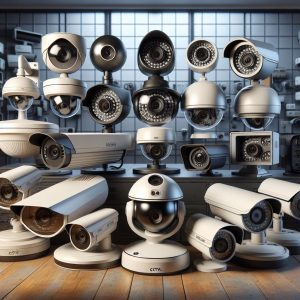Introduction
CCTV systems are essential for maintaining security and monitoring activities in various environments. However, like any technology, they can encounter issues that may hinder their functionality. Knowing how to troubleshoot common CCTV problems can save time, money, and ensure continuous surveillance. Here’s a comprehensive guide to help you address and resolve issues when your CCTV system stops working.
1. Initial Checks
Verify Power Supply:
- Ensure that the CCTV cameras and DVR/NVR are receiving power. Check for any power outages or faulty power sources.
- Test the power supply with a multimeter to confirm it is providing the correct voltage.
Inspect Connections:
- Check all cables and connections between the camera, DVR/NVR, and monitor. Ensure they are securely plugged in.
- Look for any visible damage to the cables and replace them if necessary.
Check Camera Status Lights:
- Pay attention to any status lights on the camera. Different blinking patterns or colors may indicate specific issues.
2. Troubleshooting Common Issues
No Video Signal:
- Inspect Connections: Ensure all cables are securely connected and there are no loose connections.
- Power Supply Check: Confirm that the camera and DVR/NVR are receiving power.
- Check DVR/NVR Settings: Verify that the DVR/NVR is set to display the correct camera channels.
- Reset Devices: Try power-cycling the DVR/NVR, cameras, and monitor.
Blurry or Distorted Images:
- Clean Camera Lens: Ensure the camera lens is clean and properly focused.
- Adjust Camera Position: Make sure the camera is positioned correctly to capture the desired area without obstructions or glare.
- Review Lighting Conditions: Poor lighting can impact image quality. Adjust lighting or install infrared (IR) illuminators for night vision.
- Verify Camera Resolution: Check camera settings to ensure they are set to the appropriate resolution for clear images.
Recording or Playback Issues:
- Storage Space: Check the available storage space on the DVR/NVR. Delete unnecessary recordings or upgrade storage capacity if needed.
- Check Recording Settings: Ensure the system is set to record based on schedule or motion detection triggers as intended.
- Playback Speed: Adjust playback speed settings on the DVR/NVR for smoother playback.
- Update Firmware: Regularly update firmware for both cameras and recording devices to access bug fixes and improvements.
3. Advanced Troubleshooting
Camera Not Functioning:
- Power Check: Verify that the camera is receiving power. Test the power source and cables for any issues.
- Reset Camera: Try resetting the camera to its default settings. Refer to the camera’s manual for reset instructions.
- Replace Faulty Cameras: If troubleshooting steps fail to resolve the problem, consider replacing the camera with a new one.
Connectivity Issues:
- Wi-Fi Interference: Reduce signal interference by relocating the router or using a dual-band network.
- IP Conflicts: Assign static IP addresses to avoid conflicts.
- Replace Damaged Ethernet Cables: Ensure all cables are in good condition and replace any that are damaged.
Night Vision Problems:
- Clean IR LEDs: Ensure the infrared LEDs are clean and unobstructed.
- Verify Night Vision Mode: Ensure night vision mode is enabled in the camera’s software.
- Supplemental IR Illuminators: Consider adding external IR illuminators for extended coverage.
4. Preventive Measures
Regular Maintenance:
- Clean lenses regularly to ensure clear images.
- Check connections and cables periodically to prevent loose connections.
- Update firmware regularly to keep the system running smoothly.
Proper Installation:
- Ensure cameras are installed in optimal locations to cover desired areas without obstructions.
- Use weatherproof housings for outdoor cameras to protect them from environmental factors.
Security Measures:
- Use strong passwords and enable encryption to protect your CCTV system from hacking.
- Limit remote access to trusted devices and regularly monitor access logs.
5. Seeking Professional Help
If troubleshooting steps fail to resolve the issue, it may be time to seek professional assistance. Security professionals can provide expert insights and advanced solutions to ensure your CCTV system functions optimally.
They can help with:
- Replacing faulty hardware or updating software.
- Configuring advanced settings and integrations with other security systems.
- Providing regular maintenance and support to prevent future issues.
Conclusion
By following these steps, you can systematically identify and address many common issues with your CCTV system. Regular maintenance and prompt troubleshooting can help prevent long-term problems and ensure continuous surveillance.
Secure Your Home and Business with Garrison Alarms!
Experience unmatched safety with Garrison Alarms – your trusted partner in cutting-edge home and business security solutions. With over 35 years of experience, we offer expert installation, state-of-the-art technology, and personalized security strategies tailored to your unique needs.
Our Services Include:
- Home & Business Alarms: Maximize security with our advanced wired and wireless alarm systems.
- CCTV Systems: Protect your property with high-resolution, 4K HD, and color night vision cameras.
- Access Control: Secure your premises with keypad entry, biometric solutions, and more.
- Alarm Monitoring: 24/7 monitoring to ensure your safety and peace of mind.
Why Choose Garrison Alarms?
- Expert & Professional Service: Our licensed technicians provide top-notch installation and support.
- Customer Satisfaction: We prioritize your security and satisfaction with a focus on quality and reliability.
- Affordable Pricing: Get the best security solutions at competitive prices.
Get a FREE Quote Today! Visit Garrison Alarms or call us at 09 520 4875 to learn more and secure your property today!
Garrison Alarms – Your Safety, Our Priority





